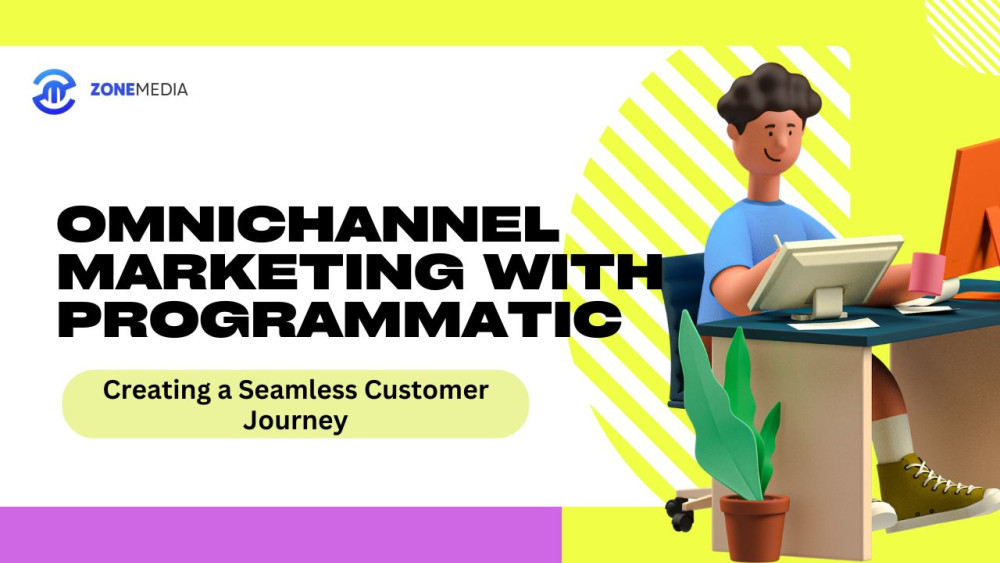Imagine walking into your favorite clothing store. The salesperson greets you by name, remembers what you bought last time, and even suggests something that matches your previous purchase. Now, imagine this same level of personalized service happening across every digital platform you use—whether you’re scrolling on social media, checking your email, or watching a video on YouTube. That’s the power of omnichannel marketing with programmatic advertising—delivering a seamless and personalized customer experience across all touchpoints.
What is Omnichannel Marketing?
Omnichannel marketing is an integrated strategy that ensures customers have a consistent brand experience across multiple channels, whether online or offline. Instead of treating each marketing channel as a separate entity, omnichannel marketing synchronizes all platforms—social media, email, websites, in-app ads, and even in-store interactions—to create a unified journey.
The Role of Programmatic Advertising in Omnichannel Marketing
Programmatic advertising is the automated buying and selling of ad inventory using real-time data, machine learning, and AI. When combined with an omnichannel strategy, programmatic ensures that the right message reaches the right customer at the right time—regardless of the device or platform they’re using.
Why Omnichannel Programmatic Marketing Matters
1. A Unified Customer Experience
Customers no longer interact with brands through a single channel. They might browse a product on their phone, add it to their cart on a desktop, and complete the purchase in a physical store. Omnichannel programmatic marketing ensures that messaging, promotions, and branding remain consistent across all these touchpoints, reinforcing the brand experience.
2. Hyper-Personalization at Scale
With real-time bidding (RTB) and AI-powered targeting, brands can leverage customer data to deliver hyper-personalized ads based on browsing behavior, purchase history, location, and even past interactions. This means a customer who abandoned a cart can see a tailored ad with a special discount on their preferred social platform or email inbox.
3. Seamless Cross-Device Targeting
According to studies, the average consumer switches between three to five devices daily. Traditional marketing often struggles to track these movements, but programmatic advertising identifies users across multiple devices, ensuring that ad experiences remain fluid and relevant.
4. Data-Driven Decision Making
One of the biggest advantages of programmatic omnichannel marketing is access to real-time analytics. Brands can track customer interactions across all touchpoints, measure engagement levels, and optimize campaigns dynamically—maximizing ROI and minimizing ad spend wastage.
Real-World Example: Omnichannel in Action
Let’s take the example of a retail fashion brand using omnichannel programmatic marketing.
A customer sees a social media ad for a new dress while browsing Instagram.
Later, while reading an article, a native ad featuring the dress appears.
That evening, the customer receives a personalized email reminding them about the dress with an exclusive discount.
The next day, when they open their favorite shopping app, they see a programmatic display ad featuring the dress in different colors.
They finally decide to visit the store, where a sales associate (using a customer data platform) knows their preferences and helps them make a purchase.
This multi-touch, personalized approach increases the likelihood of conversion, enhances the brand experience, and builds long-term customer loyalty.
Overcoming Challenges in Omnichannel Programmatic Marketing
While omnichannel marketing has numerous benefits, it also comes with challenges. Here’s how brands can overcome them:
Data Silos – Ensure all customer data from different channels is consolidated into a single platform for a unified view of the customer journey.
Ad Fatigue – Avoid bombarding customers with excessive ads by using frequency capping and AI-powered optimization.
Privacy Concerns – With stricter data privacy regulations, brands must use ethical data collection practices and comply with GDPR and CCPA.
Attribution Complexity – Use advanced attribution models to measure the impact of each touchpoint in the customer journey and adjust campaigns accordingly.
The Future of Omnichannel Programmatic Marketing
The future of omnichannel marketing will be driven by AI, voice-activated ads, interactive shopping experiences, and immersive AR/VR campaigns. As technology advances, the ability to deliver even more seamless and personalized brand interactions will continue to evolve.
Final Thoughts
Omnichannel programmatic marketing isn’t just a trend—it’s a necessity for brands that want to thrive in the digital-first world. By leveraging data-driven insights, automation, and AI-powered targeting, businesses can deliver meaningful, personalized experiences that resonate with consumers wherever they are in the World.


